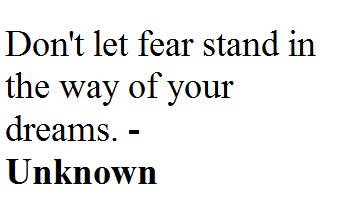
Tips: Abdominals
1. Train Your Abs...
Quite simply many people neglect abs.
Solutions
• Treat your abs like any other muscle group and work them out!
• As with other muscles, set goals (how you want your middle to look, reps and weight targets)
• Do 8 to 12 sets for your rectus abdominis and 3 to 5 sets for your obliques.
Not only do trainers often not keep intensity high for abs, they often merely perform endless sets of crunches and high reps you wouldn’t perform for other muscle groups.
Solutions
• Train for growth, tone later.
• Typically, do sets of 10-15 reps. When you can do more than 15, increase the resistance.
• Ab machines are often the easiest way to add resistance, but there are also many weighted ab exercises out there.
• As opposed to increasing reps or the weight, you can boost intensity via techniques such as supersets, rest-pauses, drop sets or giant sets.
3. Don't Miss The Target
• Maintain strict form and focus purely on your abs.
• Do crunching movements for the rectus abdominis either free form or with a machine.
• Train at a slow, steady pace.
• All ab exercises have short ranges of motion, and thus it is important to hold each contraction for a couple seconds.
4. Work More Than Just Upper Abs
• Lower abs are important for core strength and can be worked with reverse crunches and leg or knee raises. These can be further augmented with weights (ankle restraints or resistance bands)
• Obliques are also crucial for core strength and can be worked with side crunches or trunk twists.
• Your transverse abs lie underneath the visible abdominal areas, but are crucial for your posture and keeping your belly in. You can work this area by doing an abs vacuum (inhaling and sucking your belly in towards your spine as far as possible and holding that position for a count of 10, then repeating for up to 10 times).
Here is a list of exercises that hit different areas:
Crunches – Works all of the abdominals with special emphasis on the upper abs.
Decline Crunches – Mostly upper abs.
Cable Crunches (with a rope) - Mostly the upper abs.
Reverse Crunches – Works all abdominals, mostly focusing on the lower abs.
Hanging Leg Raises – Mostly lower abdominals.
Hanging Knee Raises – Mostly lower abdominals.
Sit ups – Overall abdominals.
Oblique Crunches – Works upper and lower obliques, with more emphasis on the upper obliques.
Hanging Side Knee Raises – Mostly lower obliques.
Trunk Twists – Works obliques.
Abdominal Machines – Overall abdominals.
For our guide on how to perform these exercises see our page here.
5. Don't Use Abs to Reduce Fat
• Change your diet to lose fat (Eliminate trans fat and minimize saturated fat and simple carbohydrates. Focus on lean protein, complex carbohydrates and healthy fats).
• Do 45-60 minutes of cardio post-workout or early in the morning.
• Focus your abs workouts on growth; the new muscle will become more visible as you lose fat.
6. Workout With Weights
This is probably the most important tip of all. Train your abs just like any other muscle group.
Your abs are a very thin sheet of muscle and hard to enlarge. If your abs stick out away from the body it will appear that there is less fat in between the abdominals, contrary to what most people believe.
7. Nutrition is just as important
This is also a very important tip. Training your abs alone won't be enough to see super ripped abs.
Your abs are a very thin sheet of muscle and hard to enlarge. That being said, adjusting your diet to reduce the amount of fat around this area will provide you with better looking abs.
A common occurrence is "rewarding" yourself with fatty foods like fast food after a good workout, however this will harm your training.
8. Lift Your Legs
Lifting your legs off the ground during exercises like chest press can be a great way to further work your core.
You will need to be wary that by forcing yourself to use your core and stability muscles with heavy pressing exercises you may find yourself a lot less stable since your legs are no longer on the floor. You will need to use your core to balance as you perform the exercises and so starting with lighter weights is recommended.
9. Compound Exercises
Results can also be seen my strengthening the abdominal area by performing heavy compound exercises such as deadlifts, good morning and squats (also over head squat/single leg squat).
Performing chin-ups and glute bridges also works the abs by stabilising the core.
A study of Division 1 college football players showed that maximal lower body strength and power as measured by the 1 rep max back squat was associated most directly with strength in the core muscles.
The idea behind this is that whilst maintaining good from you will be using your core to stabilise your body and thus strengthen your core.

